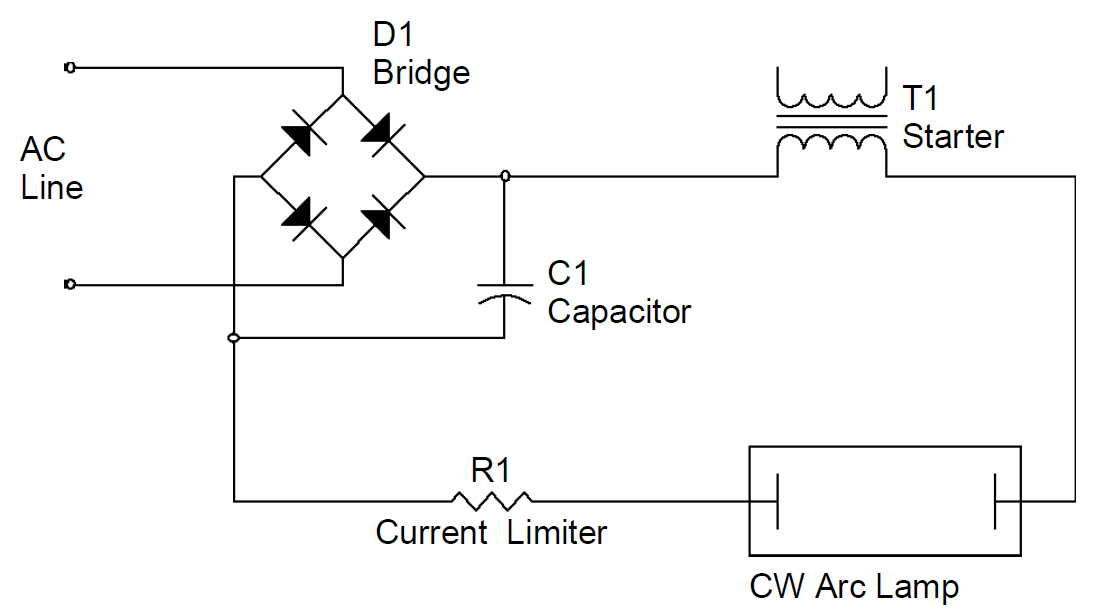
POWER SUPPLIES (YAG Lasers)
 المؤلف:
Mark Csele
المؤلف:
Mark Csele
 المصدر:
FUNDAMENTALS OF LIGHT SOURCES AND LASERS
المصدر:
FUNDAMENTALS OF LIGHT SOURCES AND LASERS
 الجزء والصفحة:
p306
الجزء والصفحة:
p306
 11-4-2016
11-4-2016
 2275
2275
POWER SUPPLIES (YAG Lasers)
The specific power supply involved depends on the pump source. Although often pumped by a CW arc lamp or a semiconductor diode, some small YAG lasers use flash lamp pumping similar to that used in ruby lasers. The main difference between ruby and YAG flash lamps relates to the pump energies involved. The four-level YAG laser features a much lower pump threshold than the ruby does, so lamps tend to be smaller with 250 J of input common (instead of over 1000 J for the ruby). Since energies are usually lower, linear flash lamps (with lower energy handling capabilities than helical lamps) are often used, with the pump light focused onto the rod using an elliptical reflector. Both the rod and lamp are placed at the foci of the ellipse.
Most industrial YAG lasers are pumped by a CW arc lamp to produce CW laser output or, alternatively, high repetition rates when used as a Q-switched laser. These lamps have radically different power supplies from flash lamps since they require a large continuous current through the lamp. Like a flash lamp, a high-voltage trigger is required to initiate the discharge.

Figure 1.1. CW arc lamp circuit.
CW arc lamps have characteristics similar to those of an ion laser discharge with a relatively low operating voltage and high operating currents. These lamps are filled with high-pressure gas (usually, krypton) through which an arc is sustained. Power supplies for these lamps usually involve rectification o the ac line, filtering with a capacitor, and regulation of current via a large ballast resistor or an active electronic regulator circuit, as shown in Figure 1.1, which outlines the essential components for a commercially available arc lamp supply. This particular supply uses a rather large variable resistor (R1, which in this example is rated at 5 Ω with a maximum power dissipation of 225 W!) to regulate current through the lamp. Many newer arc lamp supplies use active current regulation.
Like most other discharge tubes (including flash lamps and ion laser tubes) an arc lamp requires a high trigger voltage to initiate discharge. Essentially all lamps of this type used for laser pumping are bathed in deionized water for cooling, with deionized water used since it is an insulator and the lamp electrodes are often immersed in cooling water. This somewhat precludes the use of external triggering, so series triggering, with a trigger transformer (T1 in the figure) inserted into the anode lead, is the rule for these lamps. This arrangement also saves the need for a third terminal to be brought into the water-cooled laser head. Discharge of a capacitor (not shown) through the primary of T1 results in production of a high voltage across the lamp, which ignites it. In some cases, a high-frequency AC signal is used instead of a DC capacitor discharge to ignite the lamp.
Aside from lamps (flash lamps or more commonly CW arc lamps), YAG can be driven from a semiconductor diode laser in what is called a diode laser pumped solid-state (DPSS) laser. Semiconductor lasers utilize their own unique power supplies.
 الاكثر قراءة في مواضيع عامة في الليزر
الاكثر قراءة في مواضيع عامة في الليزر
 اخر الاخبار
اخر الاخبار
اخبار العتبة العباسية المقدسة


